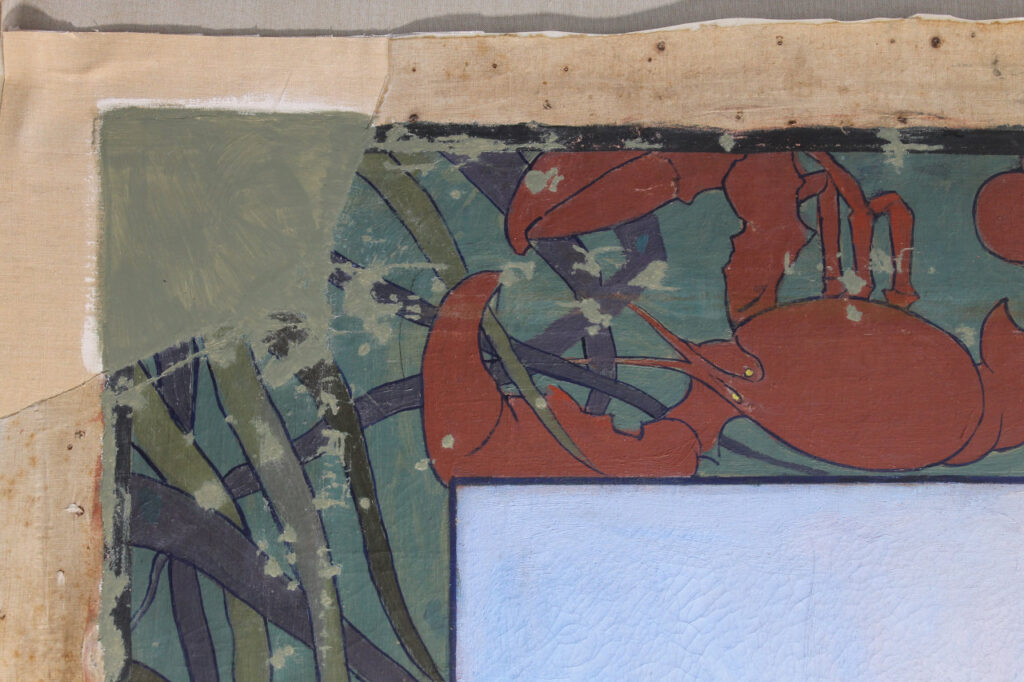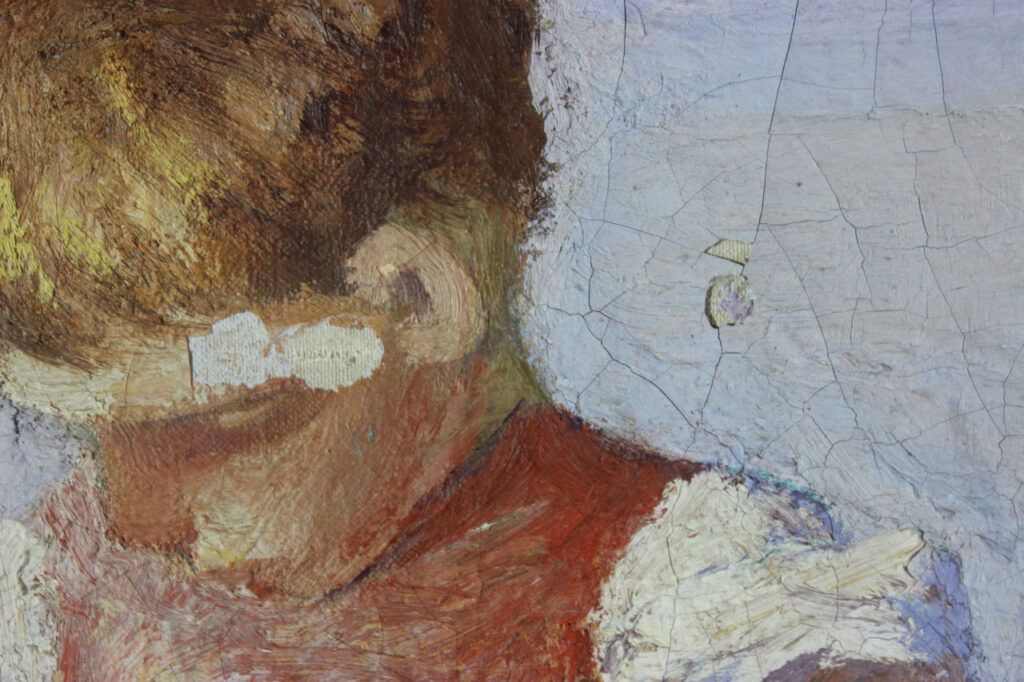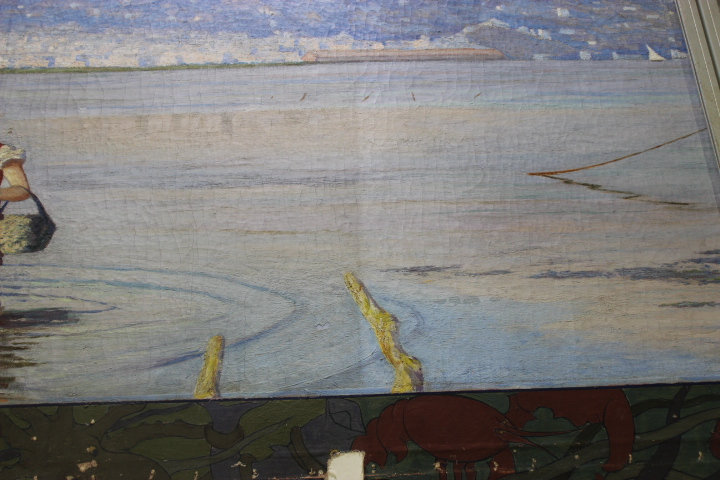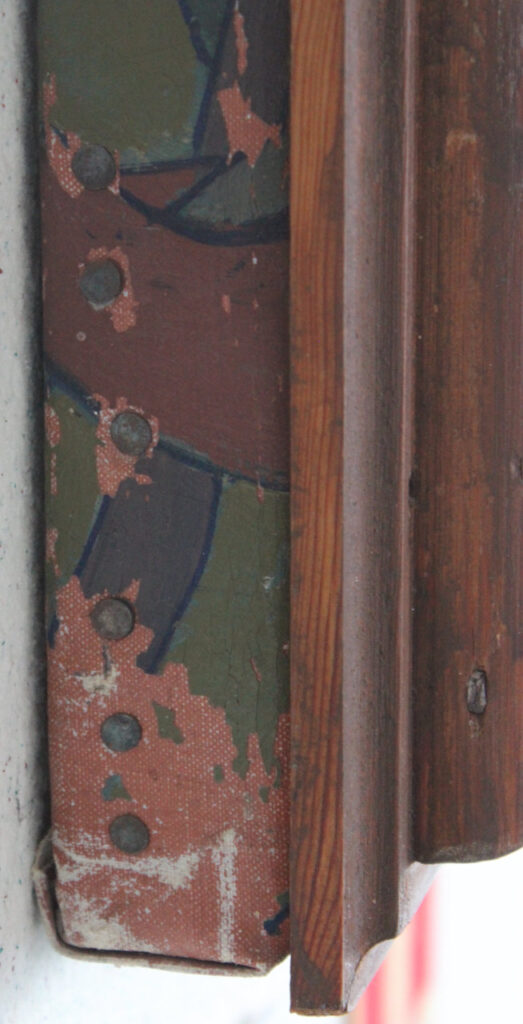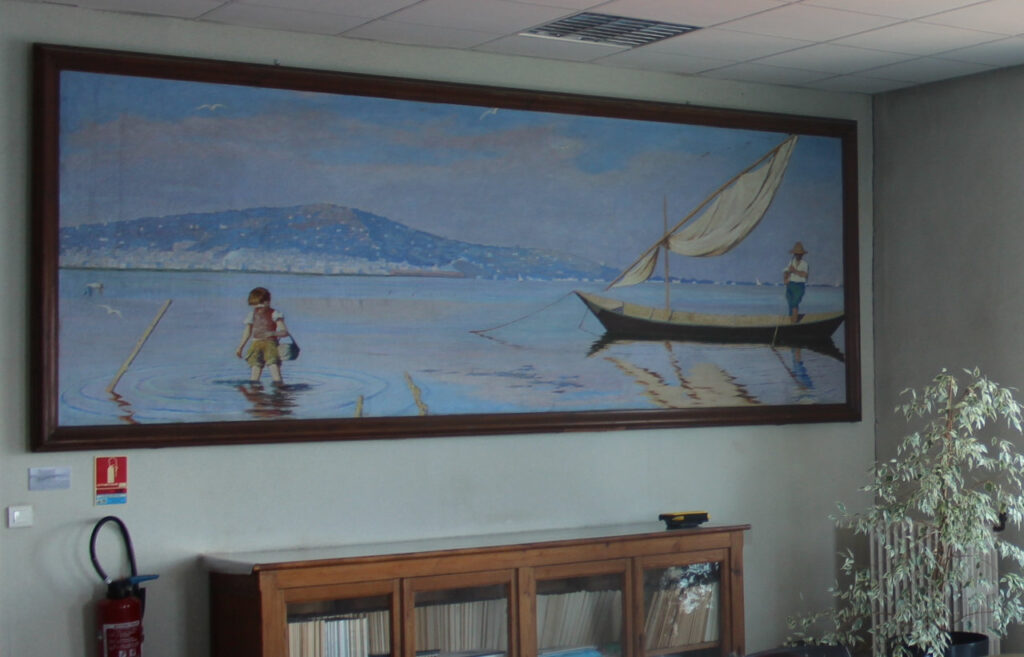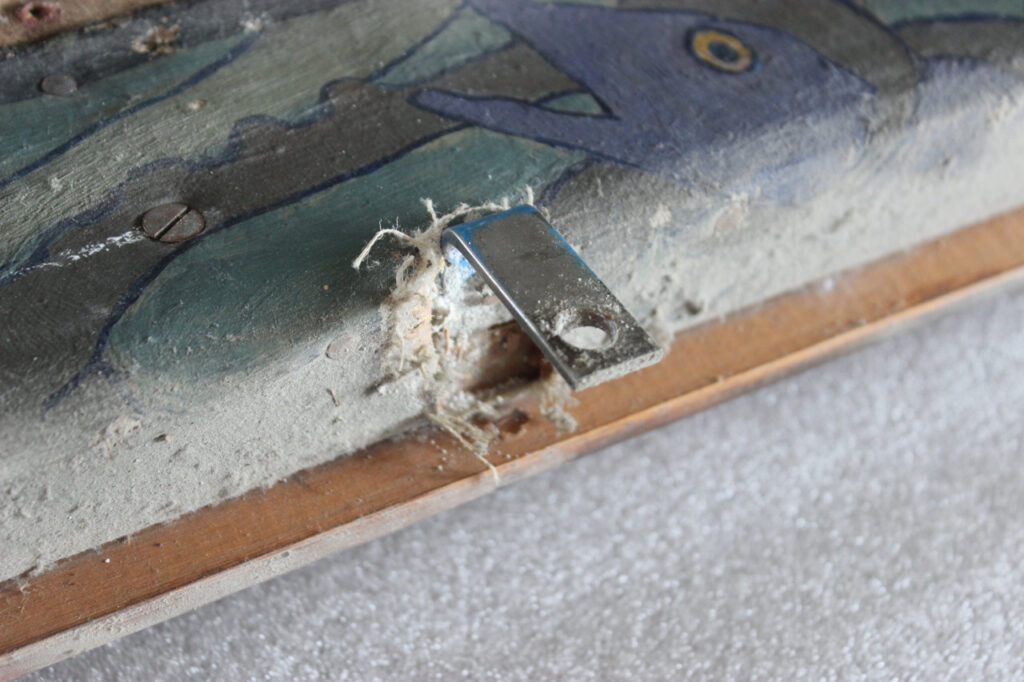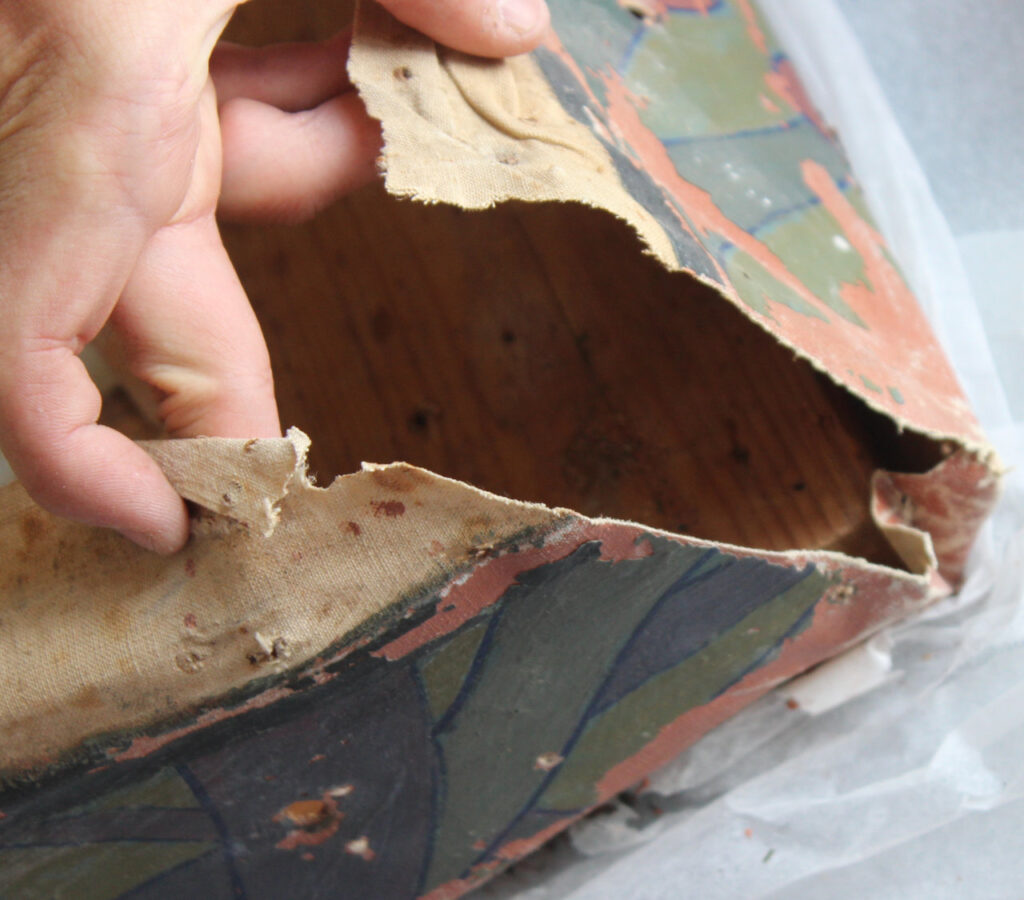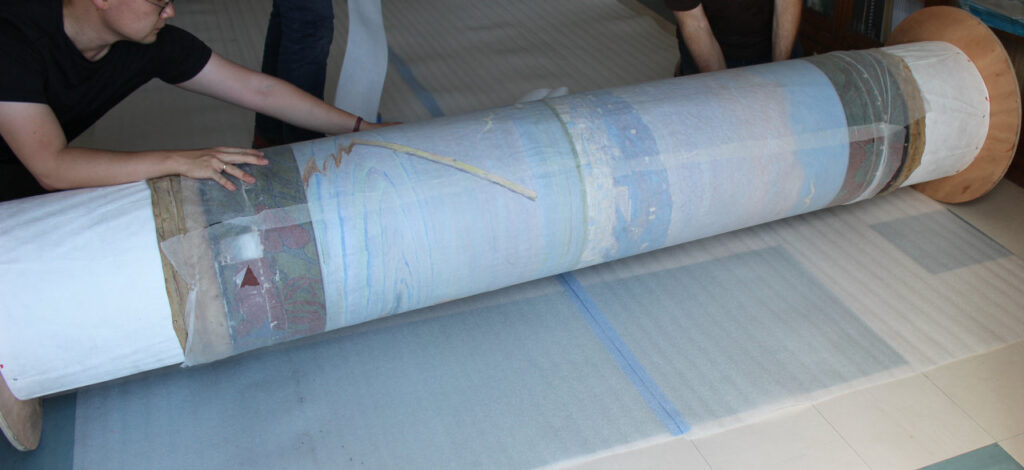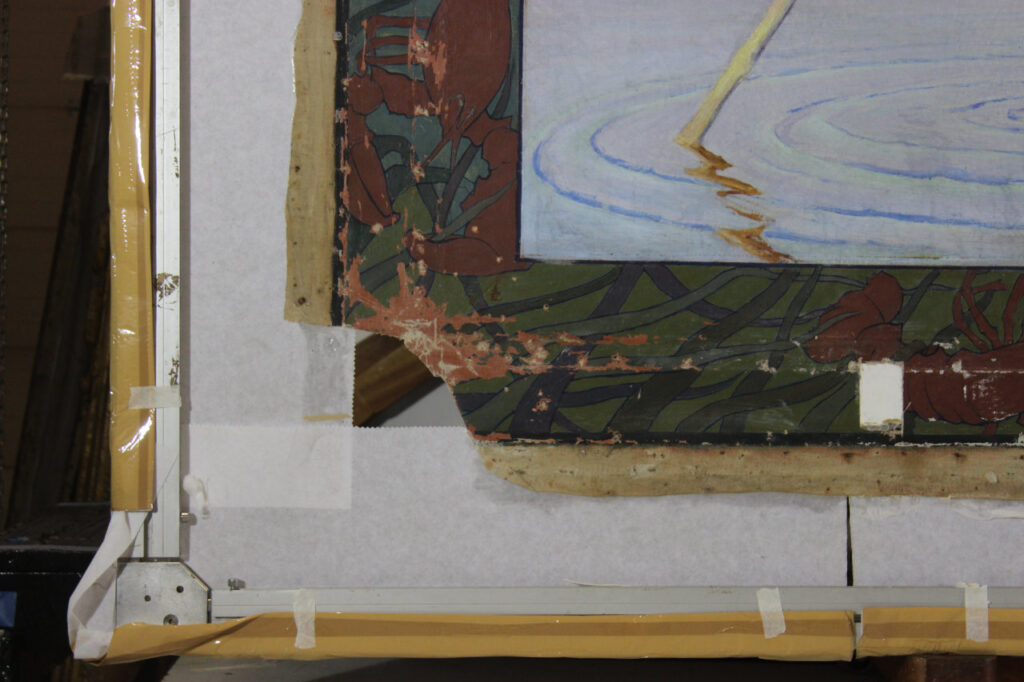A new lease of life for "L'étang de Thau et le mont Saint-Clair".
The painting "L'étang de Thau et le mont Saint-Clair" (Thau Lagoon and Mount Saint-Clair) exhibited at the Station Marine de l'Environnement Littoral in Sète has been restored to its original dimensions by Montpellier painter Max Leenhardt. Marie Connan, curator and restorer of painted works, who was part of the team of professionals who carried out this mission, explains the stages of this delicate work.
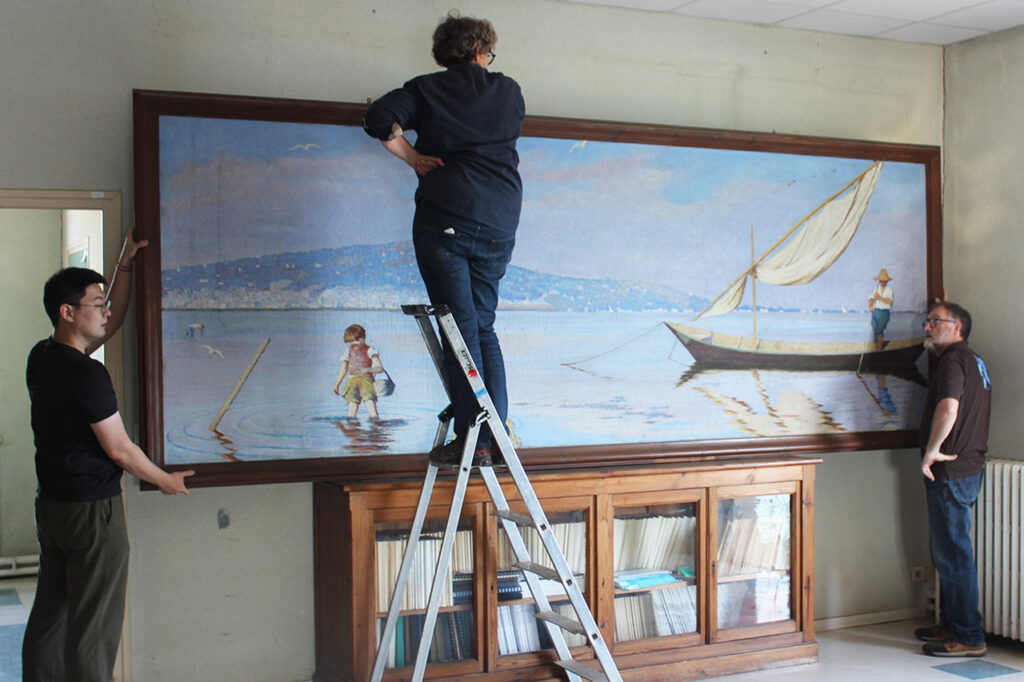
When you open the door to the large room on the top floor of the coastal environment marine station in Sète, the bay window opposite offers a magnificent view of the Etang de Thau. But if you turn your head to the left, you'll see another view of the pond, at least as majestic. A small fishing boat, a child with his feet in the water, Mont Saint-Clair in the background bathed in soft light... You're looking at a work by Montpellier painter Max Leenhardt which, at 4.20 metres long and 1.65 metres high, occupies the entire length of the room's wall, offering a double view of "L'étang de Thau et le mont Saint-Clair". This is also the title of the painting, created in 1900 at the request of Armand Sabathier, the founder of the marine station, who was related to the painter and who, according to Isabelle Laborie, who wrote her art history thesis on Max Leenhardt, donated the canvas to the station.
The painting has adorned the walls of the building for over 120 years, in less than optimal conservation conditions that have not spared the work, tarnished by the passage of time. An unidentified accident even pierced the painting, which has lost some of its beauty. " In 2024, the restoration of the work was scheduled in consultation with the station team, thanks to 23,000 euros in funding from the UM," explains Caroline Ducourau, Director of the Department of Scientific Culture and Historical Heritage. Marie Connan, curator and restorer of painted works, will be in charge of this delicate mission, along with her colleagues Danièle Amoroso, Alexandra Deneux, Séverine Padiolleau and Thierry Martel (for removal and re-installation).
A surprise frieze
In July 2024, a team of restorers came to remove the painting to assess the scale of the task. And then, surprise: all around the canvas, folded behind a wooden stretcher, lies a frieze of marine animals intertwined in seaweed. " To make it easier to fold onto the stretcher, the four corners of the canvas had simply been cut out," recalls Marie Connan. She and her team then chose to restore the work's original format, reinstating the missing canvas.
But to do this, and to complete the entire conservation and restoration process, they had to take the painting to the Amoroso Waldeis workshop in Villeneuve-lès-Avignon. "With its dimensions, it soon proved too complex to move it as it was, so we unhooked the canvas from its wooden frame after applying a temporary surface protection and rolling it up". And that's when the work begins.
"Lasagne" of paint
"Max Leenhardt uses a particular technique: the paint is applied in thick, superimposed layers, making the painting a veritable "lasagne" of paint, which increases the risk of losing material, as we've seen, for example, on the child's head", explains the restorer. And on closer inspection, the work shows a network of cracks, "a natural aging process that we can't prevent, in the same way that we can't prevent wrinkles from appearing on the skin over time", says Marie Connan.
Failing to correct the painting's wrinkles, the restorers set about "loosening and relaxing" the canvas, in order to flatten the work and limit the risk of losing more material, before filling in the areas where the paint had disappeared. " We also scoured the surface to remove dust, drips and runs, and restore some of the original brilliance of the colors. A delicate task, given the nature of this oil-based, unvarnished painting. " We have to offer the same level of brilliance as the original canvas during the retouching phase," explains Marie Connan. And while the original gloss has been preserved, the colors and light have been revived by this rejuvenating treatment. This difference is immediately obvious to regular visitors to the marine station, who have seen the work before and after its restoration.
Semi-illusionist restoration
Another striking difference is the famous frieze framing the canvas, which the curator-restorers have reconstructed. For want of knowing what was in these blind spots, the specialists had to allow themselves a slight degree of interpretation to reconstitute the work as it probably was. "We proposed what is known as a semi-illusionist restoration: up close, you can see the difference between the added parts and the original, but from a distance, you don't notice".
A major, technically complex restoration project, which enabled the painting to return to the walls of the marine station a year later, in July 2025, offering visitors this famous double view of the Etang de Thau. As Caroline Ducourau hopes, this event may well be the forerunner of others to come: "There is a significant cultural heritage at the marine station, including some paintings that also deserve restoration".
